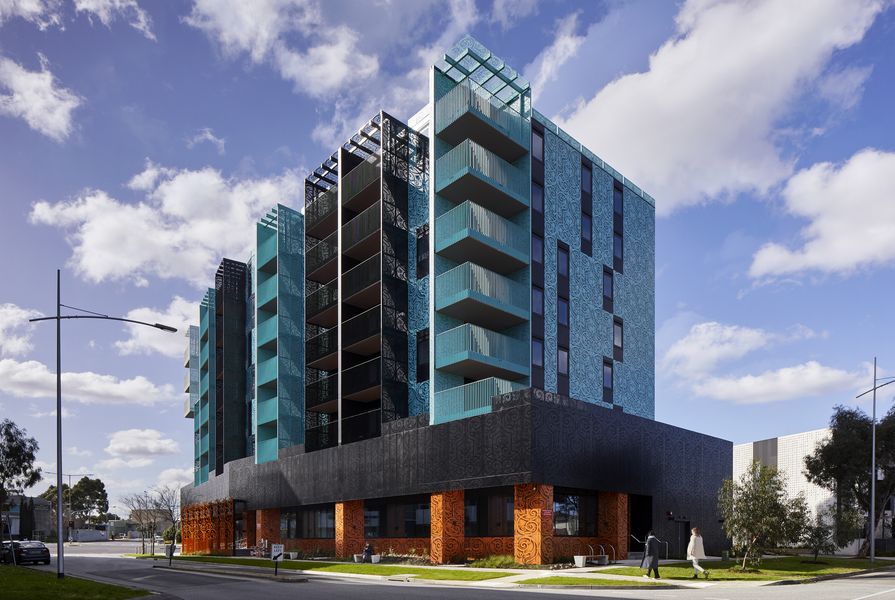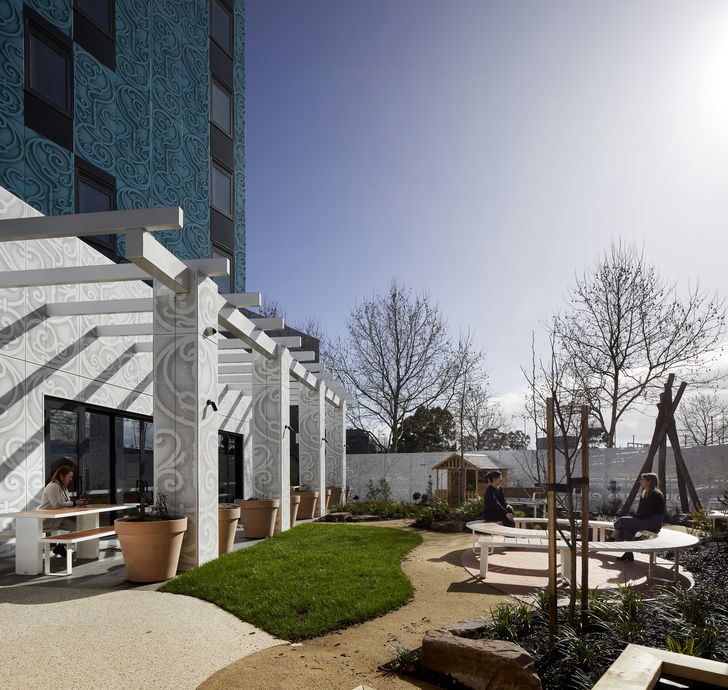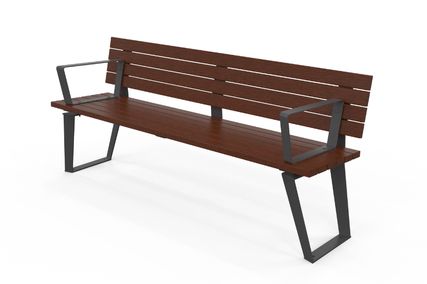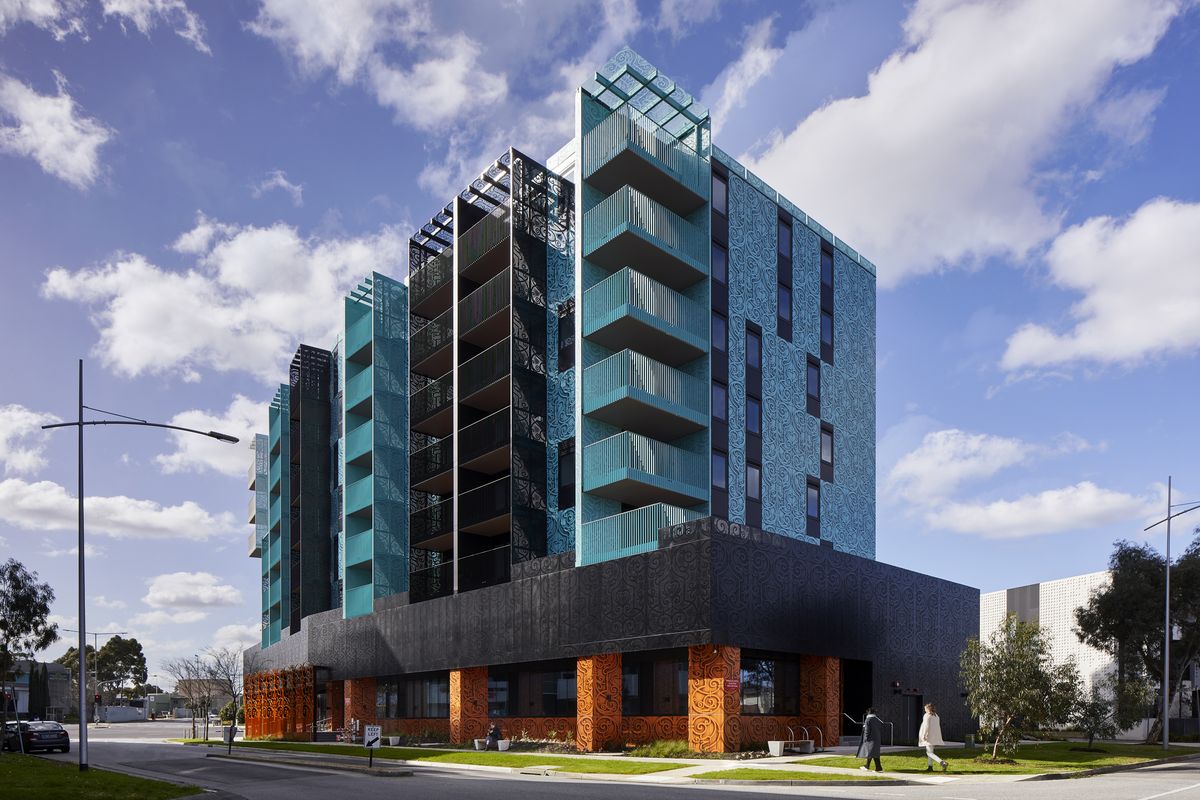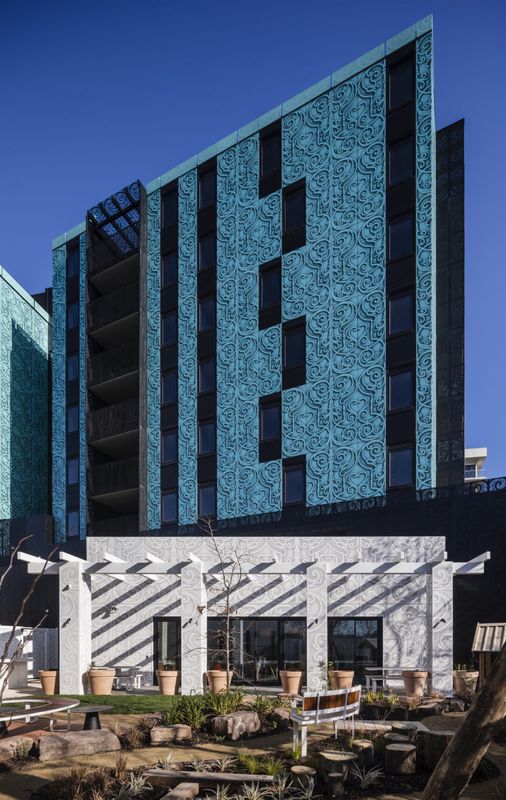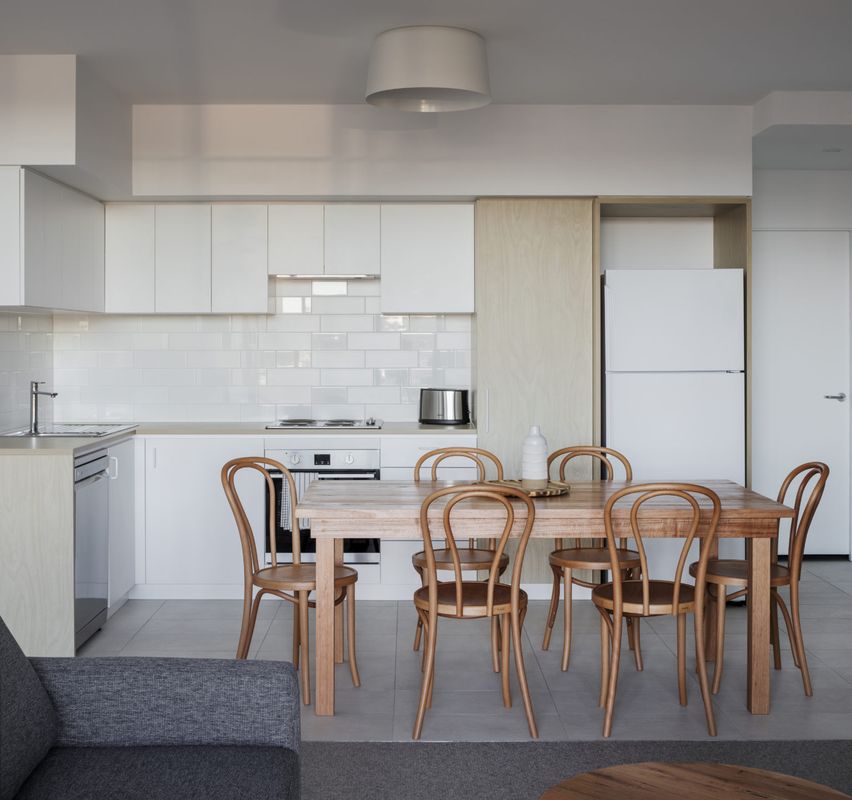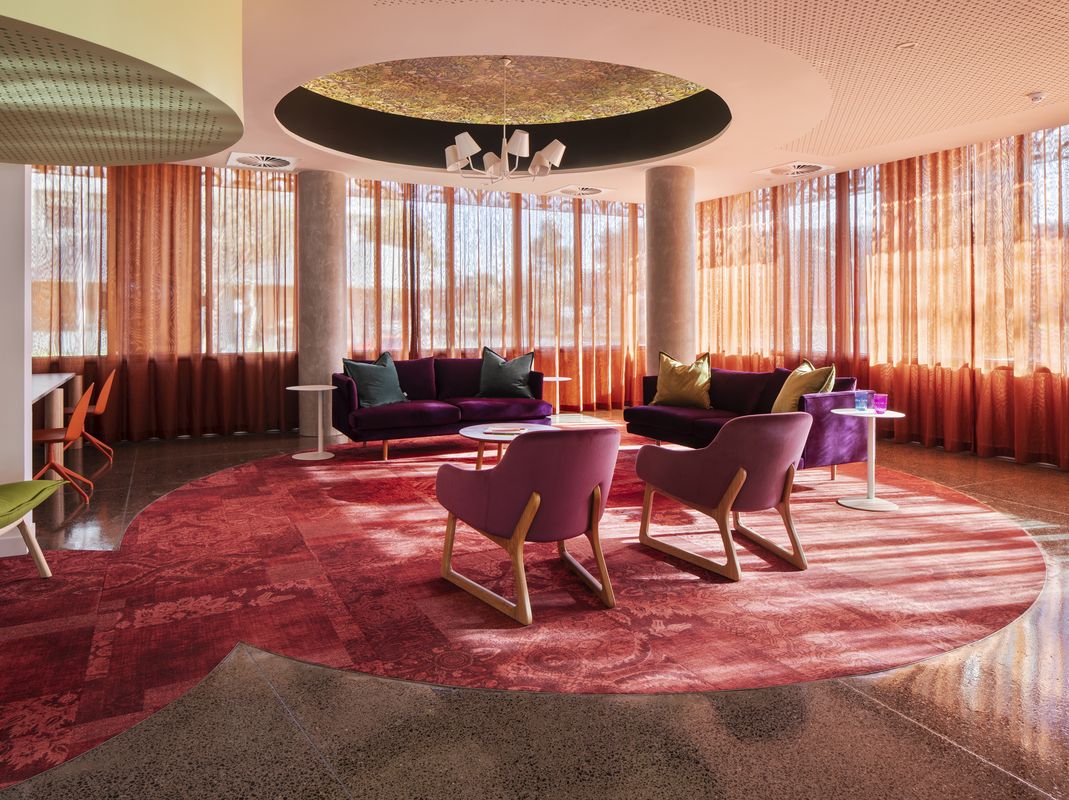A $30 million build-to-rent project designed to support at-risk women and children has been completed in Dandenong, marking the first project of its kind in Australia.
Designed by ARM Architecture for specialist homeless organisation Launch Housing, the project known as “Viv’s Place” provides permanent housing with wrap-around support services for up to 60 women and 130 children escaping family violence and homelessness.
The accommodation model features tailored support for women and children, with access to onsite skills classes, healthcare and legal aid, and permanent, purpose-built suites for ongoing consultative care. Inspired by successful models like the Sugar Hill project in Manhattan, the design is supported by seven years of research and consultation.
“It is an accommodation model equipped with support facilities to enable care and community assistance within the building itself,” said ARM director Andrew Lilleyman.
Viv’s Place is designed with a range of apartment types – from studio or single-bed to three-bedroom apartments – to suit a variety of family arrangements, from single-parent households to intergenerational families.
The project deliberately goes against the grain of preconceived understandings of social housing, demonstrating how these living models can be both “generous and abundant” on a tight budget – spatially, functionally, aesthetically and communally.
Considered details include terracotta tiles, coloured wallpaper, wrought iron lacework and gardens that foster a sense of belonging and calm.
Image: Tatjana Plitt
The building shirks conventional, sterile apartment design, wrapping the interiors and exteriors with materials, patterns and colours more consistent with a traditional home. These include terracotta tiles, coloured wallpaper, wrought iron lacework and gardens that foster a sense of belonging and calm.
Lilleyman said this dignity-enabling model is designed to help occupants feel a sense of ownership, using trauma-informed design principles to promote connectivity and comfort.
“Given the clientele for this building, we have designed a vibrant, colourful, patterned building, which deliberately moves away from social housing models that are austere and institutional in both appearance and function,” said Lilleyman.
Andrea Wilson is an interior design leader at ARM. She said the material selections for the communal spaces are about “gathering a series and assemblage of finishes that are linked to a diversity of different cultures,” with design details that recall killim rugs, a library “tent” with an interior imagined as a “wallpapered library artifice,” and wallpaper adorned with blue urns evocative of the Mediterranean.
Lilleyman said the project “pushes the envelope” in terms of what design can do for apartment buildings. “The sense of identity and belonging is important for a building like this and its occupants, and the patterns and concepts that go into the design create that environment,” he said.
Trauma-informed interior space is designed to cater for people with specific needs, both for a sense of community and connection and conversely for quiet and privacy.
Image: Tatjana Plitt
The communal interior space is designed to cater for people with specific needs, providing opportunities for social connection as well as quiet and privacy. “It’s a journey of discovery,” said Wilson. “There’s a central couch area but there are also a series of discreet niches that create very strategic breaks between play and rest spaces.”
Wilson said Viv’s Place helps to challenge the notion of what is possible for interior design on community and low-budget projects. “There is a huge amount of material that can be selected that is provocative and that stimulates the imagination,” said Wilson. “It’s an interesting thing to move away from pure colour-blocking or texture, which are the standard approaches, into something that is a lot more inspiring. We’re moving away from something institutional and adding pattern and colour in a way that fills a space that could feel empty.”
Launch Housing chief executive Bevan Warner said he hopes the building will provide a prototype for future social housing establishments that “steer away from institutional design”.
“Solutions like Viv’s Place are critical to breaking the cycle of intergenerational homelessness and giving children a strong start in life,” said Warner.
The project was partially funded (40 percent) by the Victorian government, with the remainder of funding provided through philanthropic donations from the Australian Nursing and Midwifery Federation, the Shine On Foundation, the Ian Potter Foundation and the Gandel Foundation, as well as from the Friday family of Melbourne.

